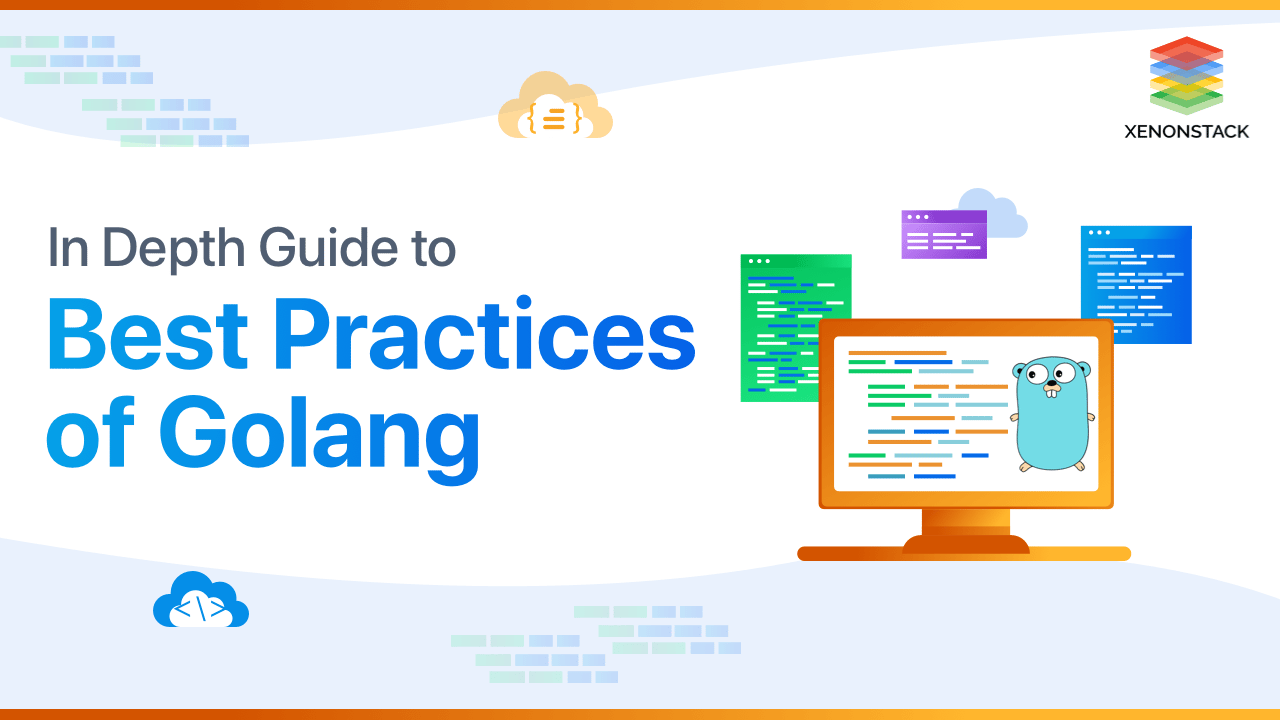
What is Golang?
It was openly announced in November 2009, and the 1.0 version was released in March 2012. Go is the open-source programming language developed by Google developers and other contributors' combined efforts. The Best Practices of Golang clarify the software development process, unusually for complex architecture and processes. The Go language ensures code efficiency and transposes into faster software and apps for enterprises. Companies that identify the need for meaty and efficient code have selected it. Here are some essential firms that have done so:- Dropbox
- Uber
- Docker
- The New York Times
- BBC
- SoundCloud
The most use of it is when an application needs to be scalable; there is one language that can perfectly fit the criteria, i.e., Golang Source: Microservices with Java and Golang
What are the Benefits of using Golang?
Golang has some clear advantages over some of its established analogs.It is Fast
- It is a compiled language, which indicates the code written is directly transposed into formats that a processor understands. Meanwhile, Java's application is compiled into bytecode executed by the virtual machine.
- It has a stronger organizational structure in a business where the need for mid-level administrators improves the speed of making things done.
It's Easy To Learn
Choosing Go is easy for software developers, unusually if they already have a solid base in C or Java. While some keywords and syntax may slightly differ, Go has a very procedural process that programmers would familiarize themselves with within no time.It is Well-Scaled
- One of the causes you all ought to use it is its capacity to support concurrency. The Go language has Goroutines, which can run together and independently.
- Goroutines take up just two kB of memory, making it scalable when running multiple concurrent methods, unlike Java threads blocking by variety, where Goroutines are non-blocking. Goroutines is the succession of the async process used by JavaScript and the traditional multithreading used by Java.
- Golang's Goroutines are the inverse of what Java's thread is, where the latter is a heavyweight that eats memory. Technically, users can run millions of GoRoutines without crashing or impacting the system. Having stronger and more popular software gives you an edge over your competitors.
General Programming Tools
As an open-source initiative, you'll have no problems getting the development tools for your team. There are many editors, IDEs, and plugins that you can download from the GitHub repository. Few cloud-based IDEs support Go are also available.Big data platform can be described as an extensive collection of related data, from which useful information can be fetched and used for various projects. Click to explore about, Why Golang for Big data and Parallel Processing Applications?
What are the best practices for Golang?
The best Practices Golang developers must follow are given below.Use gofmt
- Run gofmt on your code to automatically fix most manufacturing style issues. Almost all Go coders in the world use gofmt.
- gofmt command reads the go program, and it will give you the correctly arranged output after indentation and vertical alignment, and even it can reformat the comments.
Commands and Options
- gofmt filename:- It will print re-formatted code.
- gofmt -w filename:- this will reform every code and update the file.
- gofmt -r 'rule' filename:- Use the rewrite rule to the source before reformatting it.
- gofmt /path/to/ package:- This will format the whole package.
filename:
demo.go package main import "fmt"// this is demo to format code// with gofmt commandvar xy int=10;var yx int=15;var zz string= “Welcome to Agira”;func print(){fmt.Println("Value for xy,yx and zz is : ");fmt.Println(xy);fmt.Println((yx));fmt.Println(zz);}
Passing a Command:
$gofmt demo.go
Output:
package main
import "fmt"
// this is demo to format code
// with gofmt command
var xy int = 10
var yx int = 15
var zz string = “Welcome to Agira”
func print() {
fmt.Println("Value for xy,yx and zz is : ")
fmt.Println(xy)
fmt.Println((yx))
fmt.Println(zz)
}
Error Message
An error message should not be capitalized (unless beginning with proper nouns or acronyms). For Example: Instead of this message fmt.Error ("Something went wrong") we can go with this error message fmt.Error ("something went wrong")
Handling Errors
Do not discard errors using _ variables. If a function returns an error, examine to make sure whether the function succeeded or not. Better, Handle the error and return it; otherwise, it will rise as a panic error when any unusual situation occurs. Don't use panic errors. Don't use panic for normal error handling. In that case, you can handle the error and multiple return values.Avoid Repetition When Possible
Assume if you want to use structures in controllers and models. Create one common file, and there you can create the structures.Variable Name Declaration
Variable names should be small rather than long. This is particularly true for local variables with limited scope.
For Example -> Prefer `c` to `lineCount` Prefer `i` to `sliceIndex`
Document Your Code
- Package name, with the associated documentation before.// Package handler registers an HTTP handler at "/compile" that package handler
- Exported identifiers seem in godoc, and they should be documented correctly.
Comment Sentences
Comments documenting declarations should be full sentences, even if that seems a little unnecessary. That way gives them format properly when extracted into godoc documentation. Comments should start with the name of the object described and end in a period. Request represents a call to run a command.
Request struct { ...
// Encode writes the JSON encoding.
func Encode() { ... and so on Comment Sentences
Summary
It happened a while, inspired by a new programming language for the developer community. It is an excellent action by Google, and the best practices it is poised to help businesses with many applications. Turning over to Golang may be decisive in shaping your software strategy and delivery for future destiny.- Read more about Golang Unit Testing and Testing Best Practices.
- Click to learn more about Golang for Modern Applications.
.webp?width=1921&height=622&name=usecase-banner%20(1).webp)


